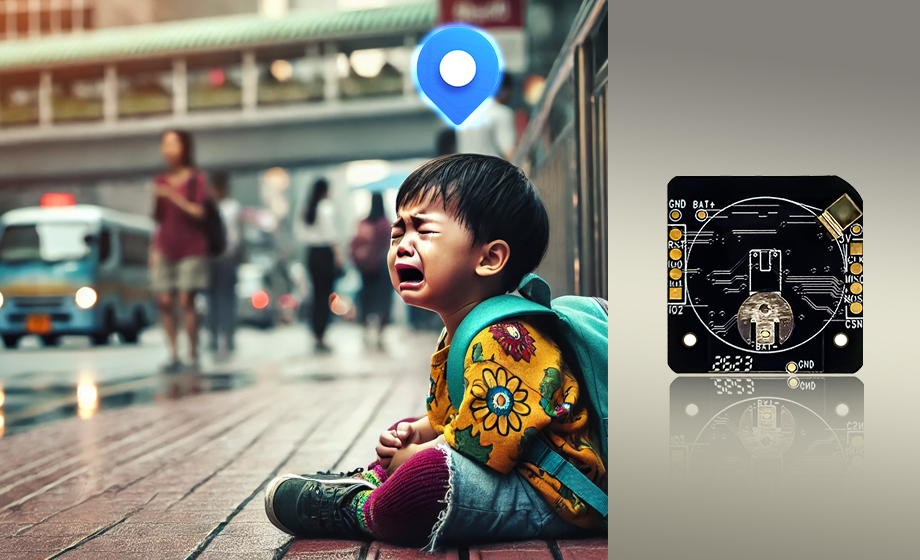Overview of UWB module ultra-wideband communication technology
Ultra Wideband (UWB) technology is a wireless communication technology with a bandwidth greater than 50% of the center frequency, or greater than 500MHz. This technology originated in the 1950s as an application for radar and pulse communications. However, it was not until 2002 that the Federal Communications Commission (FCC) officially defined and allowed the use of UWB technology.
UWB technology communicates by sending nanosecond pulse signals, which are extremely short pulse signals with high time resolution and can provide very accurate position information. UWB technology has demonstrated excellent performance in both indoor and outdoor positioning areas, including in sheltered environments such as multi-story buildings, forests or basements.

In addition to high-precision positioning, UWB technology also has the advantages of low power consumption, high-speed data transmission and high security. Low power consumption allows UWB devices to operate for long periods of time, and high-speed data transmission means UWB can be used in applications that require large amounts of data, such as HD video transmission. The high security is because the spectrum shape of the UWB signal is very special and difficult to interfere with or steal.
Second, technical analysis of UWB module ultra-wideband communication chip in outdoor positioning mobile phone
With the popularity of outdoor activities and the increase in people's security needs, outdoor positioning mobile phones have become an essential tool for many people. The application of UWB module ultra-wideband communication chip in outdoor positioning mobile phone makes the positioning accuracy of mobile phone greatly improved.
UWB module UWB communication chip is usually integrated into the GPS module of the mobile phone, by receiving and sending UWB signals, can accurately measure the distance between the mobile phone and the target position. Combined with data from multiple satellites, the phone can quickly and accurately calculate its position. Even in complex environments, such as between tall buildings or deep in forests, UWB positioning can maintain high accuracy.
In addition, UWB technology can also be used for indoor positioning. By arranging multiple UWB base stations inside the building, a UWB network can be formed, and the mobile phone receives signals from multiple base stations and calculates the location of the mobile phone through an algorithm. This method has a wide application prospect in large shopping malls, airports, museums and other places.
3. Application cases of UWB technology in various outdoor activities
** Hiking: ** Accurate positioning is essential to prevent getting lost and ensure safety during hiking. With an outdoor location phone equipped with a UWB module, you can know exactly where you are and how far away you are from your teammates or destination.
** Hunting: ** During hunting events, hunters can use UWB technology to track prey or navigate to specific hunting areas. In addition, in the event of an emergency, such as getting lost or injured, UWB positioning can help rescuers quickly find the location of the hunter.
** Mountaineering: ** Mountaineering activities often require navigating difficult terrain. The UWB module's accurate positioning function helps climbers find the right route while ensuring that they do not stray from the path or stray into dangerous areas.
** Water sports: ** Accurate positioning becomes especially important when playing water sports in lakes, rivers or oceans. With UWB technology, athletes can know exactly where they are and how far away they are from their destination or teammates.
4. Development trend and challenge of UWB technology
With the development of the Internet of Things (IoT) and smart cities, the application prospect of UWB technology is more and more broad. For example, UWB technology can be used in smart homes, self-driving cars, drones and other fields. By combining with various sensors and smart devices, UWB technology can bring more convenience and security to people's lives.
However, the development of UWB technology also faces some challenges. First, compared with other wireless communication technologies, UWB technology has a high power consumption. In order to extend the battery life of the device, the energy efficiency of the UWB module needs to be further optimized. Secondly, the spectrum resources of UWB signal are limited, and spectrum resources need to be reasonably planned and allocated to avoid interference with other wireless communication technologies. The cost of UWB technology is high, and the production cost needs to be further reduced to promote the application.
In order to overcome these challenges and drive the development of UWB technology, continuous technological research and innovation are needed. For example, researching new signal processing algorithms and low power circuit design to reduce energy consumption; Develop efficient multi-user detection and anti-jamming techniques to avoid interference; Optimize production process and reduce material costs to reduce production costs, etc. In addition, the government and industry organizations also need to strengthen cooperation to develop reasonable spectrum policies and standards to promote the wide application and development of UWB technology.
V. Conclusion
With the continuous improvement of people's demand for positioning accuracy and security, outdoor positioning mobile phones have become an indispensable part of life. As one of the core technologies of outdoor positioning mobile phone, UWB communication chip has wide application prospect and important significance. Through in-depth research and innovative development, we have reason to believe that UWB technology will bring us more surprises and convenience in the future.



